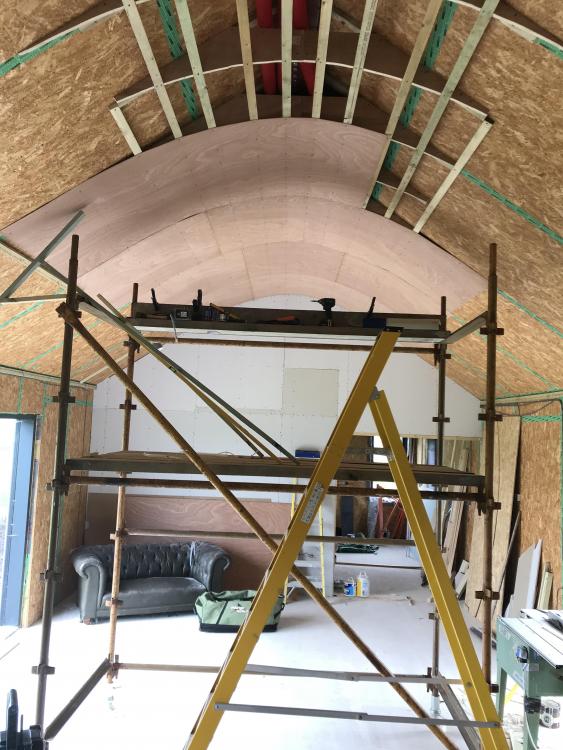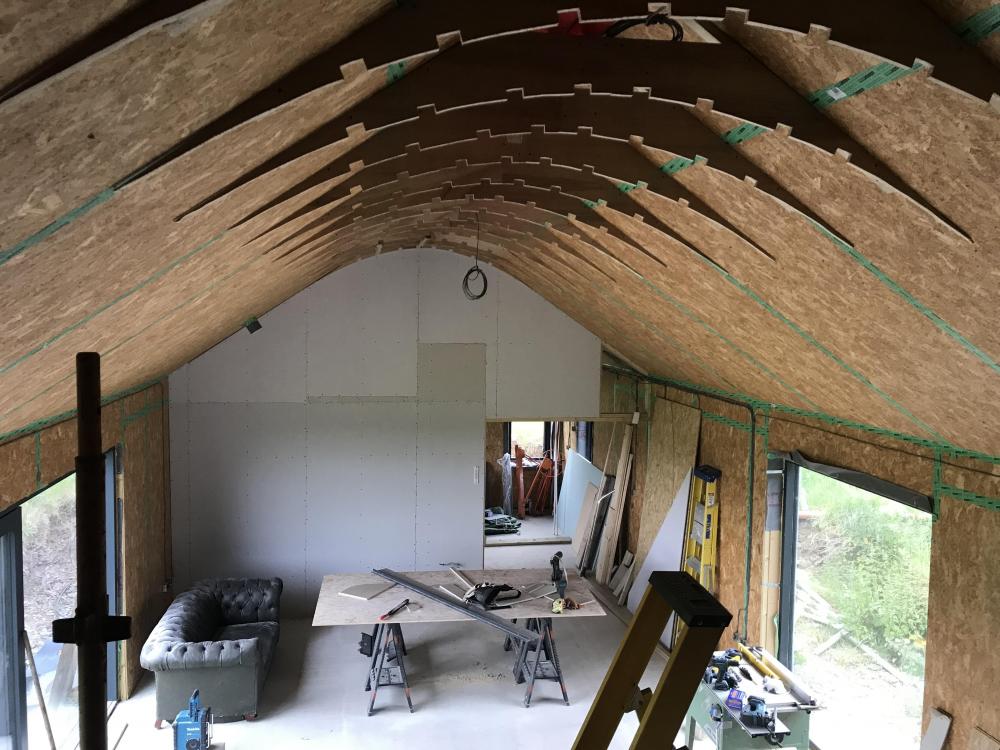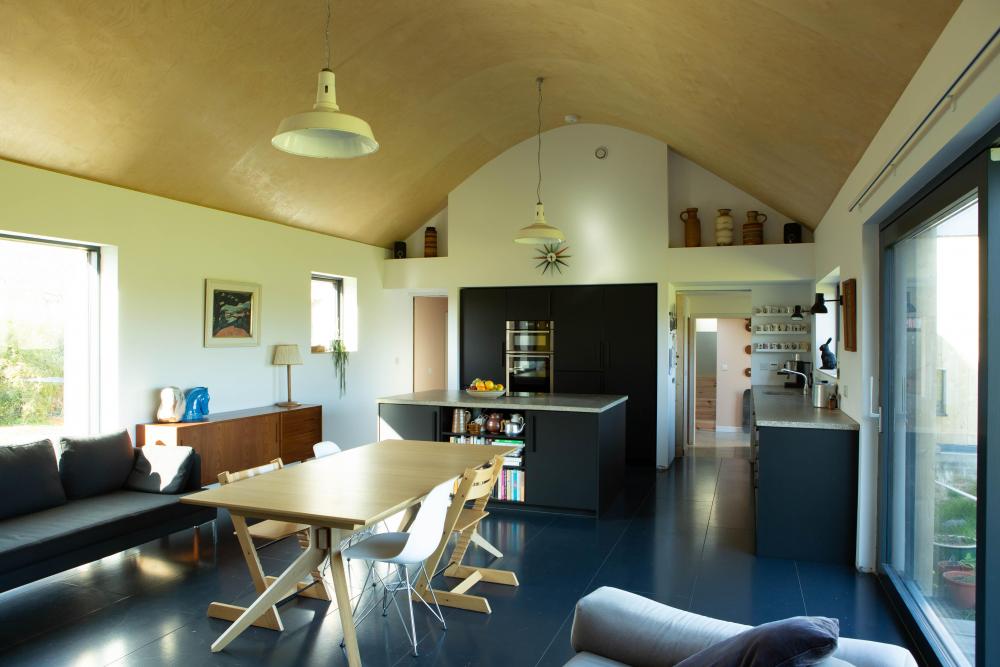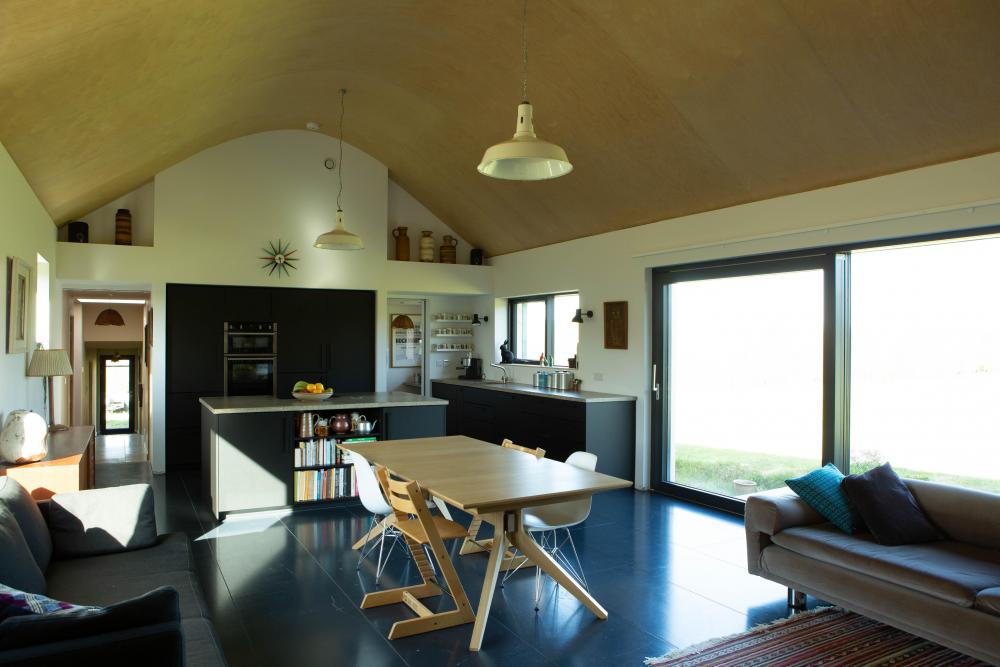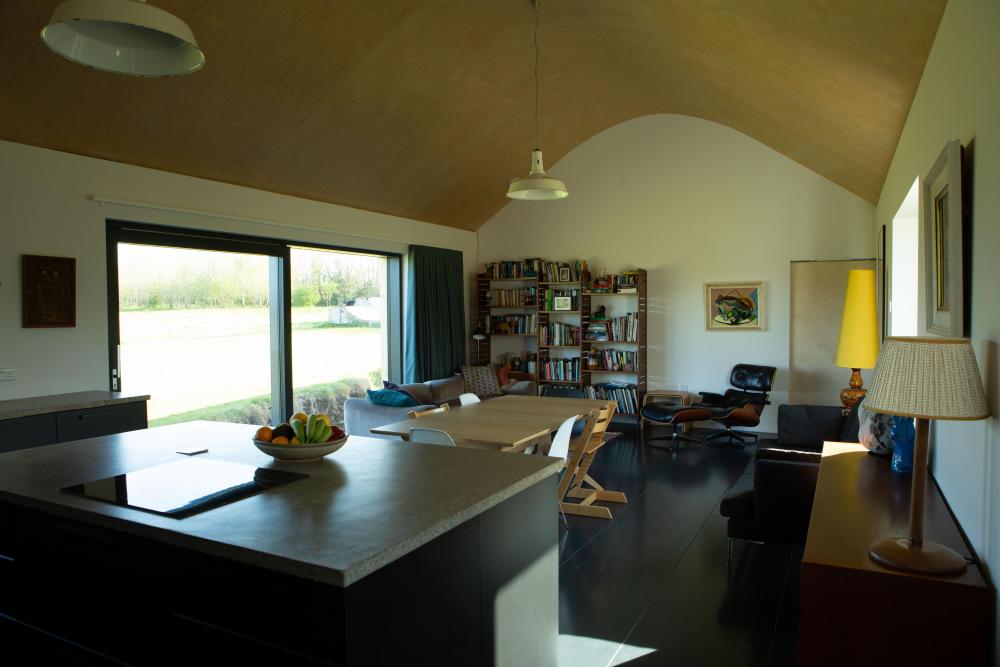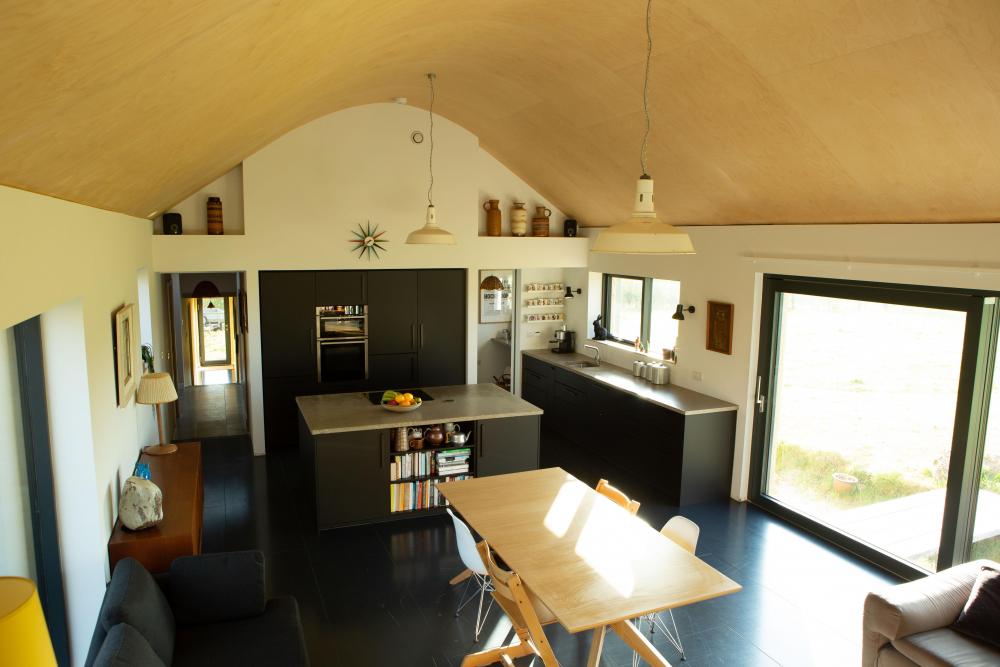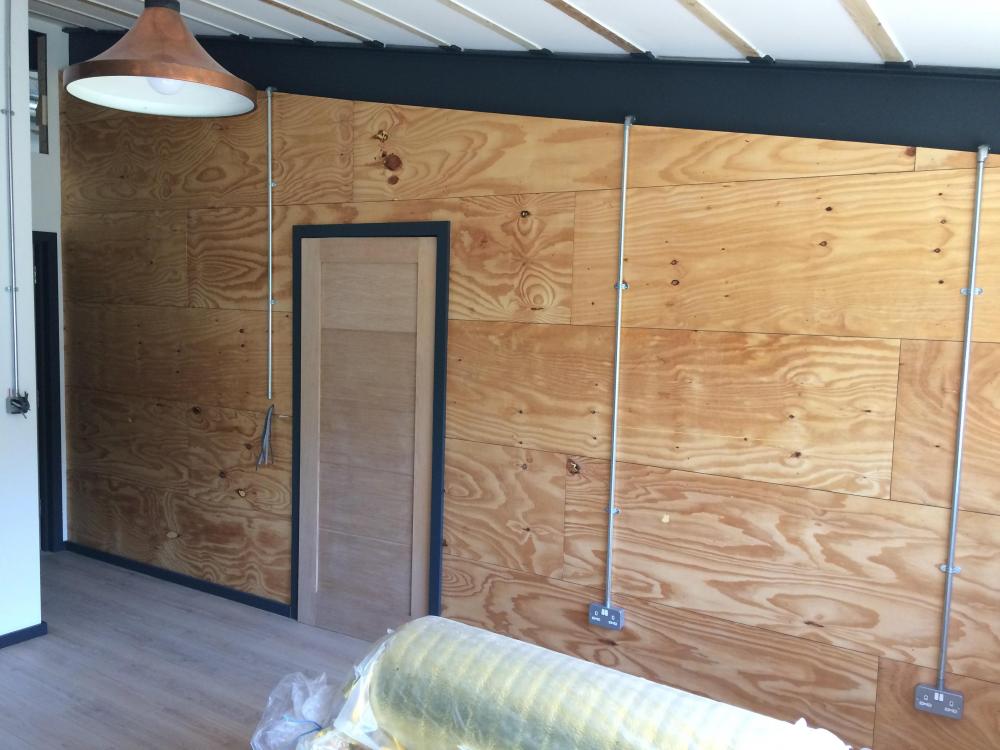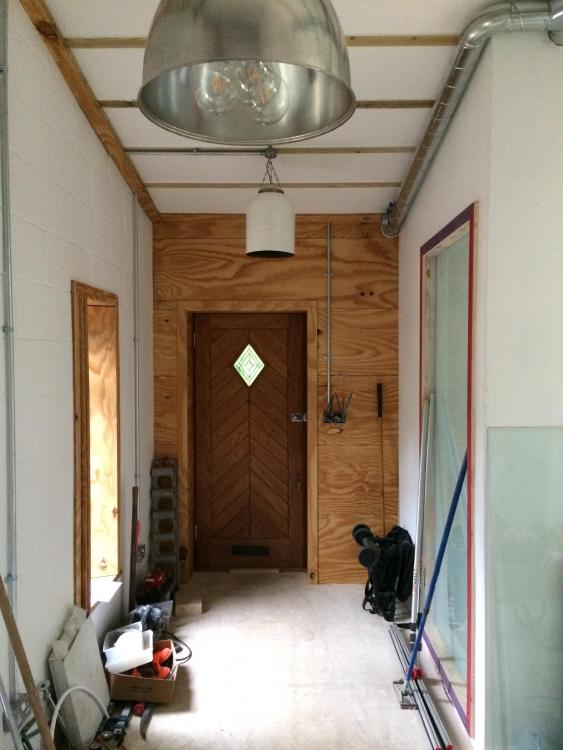Leaderboard
Popular Content
Showing content with the highest reputation on 02/03/22 in all areas
-
3 points
-
The problem is that the rising cost of electricity is forcing many back to burning stuff. My neighbour has opened up two fireplaces and over the winter has been busy every day with a chainsaw, he tells me he has 12 years worth of cut logs stored in his barn. I ws talking to a chimney sweep today who says he's never been as busy and is getting new enquiries most days. Clearly rising energy cost are bad for the planet.2 points
-
My LG runs an undocumented cycle like that. Once the temperature gets to about 5 degrees outside, it will turn just the water circulating pump on, and open the heating motorised valves to circulate the water. It draws a little heat out of the house to keep the temperature of the water in the outside pipes above 0. The colder it gets, the more frequently it does that. It only turns the water circulating pump on, nothing else, so the noise it makes is small and does not wake us, though I would prefer it did not do it. In theory with the antifreeze fitted in the pipes, it should not need to do this until well below 0. but I guess they don't trust people to fit the correct antifreeze and maintain it so consider just circulating the water from time to time is safer.2 points
-
2 points
-
2 points
-
Nod.. I think this needs some qualification from you as could be confusing to new BH members. For me it's about making sure that folk do things in a safe way and don't encounter problems later if someone asks for verification that the founds are ok. Yes there are many practicalities when you get on site.. like bucket size. Often to change buckets and try and dig founds of different widths costs more in time and increases the setting out complexity.. ground is mucky stuff and the spray painting lines say can get lost in the heat / excitement of excavating and getting started. Yes on a large commercial job with all the technical/ setting out back up varying found types are doable. You don't want to be digging for Britain (you'll get the sack as a designer) but we are talking self build / local builders/ diy here and what is practical in this context.1 point
-
Hiya. Here are a few thoughts and for all. There are quite a few different types of foundations. For example some are designed to interact with say a concrete slab (like a raft) and we call these reinforced foundations like a reinforced concrete beam you may see when you look up at the ceiling of a multi storey car park. Some are designed when you may be on variable ground or ground that may have a significant soft spot in it.. say over an old well or basement. The reinforced concrete spans over the soft bits. The foundations are designed to act like beams. Under the ground the layers of soil often don't lie flat.. and are often tilted, but your building (hopefully) is level so the foundations need to span over the transition in the soil layers which settle by different amounts. Here you often look at reinforced foundations.. like a concrete beam. Reinforced concrete has a lot more steel in it and the codes specify a minimum amount of reinforcement which is a bit of a bug bear for folk that are doing ICF basements.. but hey ho. One key to this is to recognise that concrete is not good at carrying tension forces but very good at carrying compression. You put steel in to carry the tension forces. Now you can also have simple concrete strip foundations. These work in a different way. You often see a light weight steel mesh specified, say an A142 mesh. This mesh is not there to act as reinforcement like a beam in the carpark but only to mitigate cracking as the concrete cures and does what it does. It's easy to mix up the two different concepts. Spread (strip) foundations are designed to act in compression only. The width of your strip foundations is generally governed by the overall thickness of the wall and the thickness of the foundations. The concept is that the load from the wall speads out at 45 deg through the depth of the found from the outer edge of the walls.. thus the concrete does not experience tension forces. Historically this was achieved by using corbelled brick founds or big flat stones. The diagram below hopefully helps understanding.1 point
-
Yes S.E.s tend to over egg things to be on the safe side, my founds are 700mm on dense clay specced by the BC.1 point
-
I think it’s fairly normal, we just had to do 700mm wide for timber frame kit.1 point
-
As soon as I read about them on @Jeremy Harris's blog I was sold on the idea and, even though there have been plenty of negative comments on here, it seemed that Sunamp were listening and trying to adapt. From my perspective, that is what they did. I believe the old ones were considered better purely because they took a charge after the slightest of discharges, the next generation didn't and as there was no indication of the charge state that caused consternation for some. When we got ours I thought the charging issue would still be there, but I'd missed the fact that there had been an update and, as I said, it recharges after the slightest of discharges (if I allow it). I would say that plays absolutely no part in it. Attach incoming cold feed and outgoing hot feed (with a couple of small expansion vessels). Connect the mains, turn it on. The end. There are no pumps or any other moving parts, there's nothing to 'tweak' We've got about 11 months left on our Octopus 'Go' tariff, so whilst that 5p/kW window is open for 4 hours in the morning, we're sitting pretty. (with the soon to hit price rises that'll mean we'll be heating our DHW cheaper than if we were using gas and 5p/kW would be the equivalent of a COP of 4 or 5 to 1! I'll enjoy it while it lasts but I don't expect to be getting a 5p rate this time next year so we'll have to see what's available. ?1 point
-
These are overheads which have to be distributed across all paid jobs. It is one of the costs of doing business. Different business but it costs us about £12k to submit a bid for a £1M project and we only win 20-25%. Overheads are part of the gross margin in price calculations.1 point
-
Yes. But if you look at the real price, it has not gone up for years. Gas has been way to cheap. Not as if we have never been told to do something about it in the past.1 point
-
1 point
-
Although no one could of predicted the gas/electric price hikes ( or perhaps they could? ) - to me it was obvious that any fossil fuel is a time restricted issue. Also UK electric consumption will double over the next decade ( partially due to shifting from gas ). So whilst I was laughed at with a Tesla battery ROI being pointless - I was right ( smug git ). Already locked in my price for more PV and more battery storage additions. You lot are playing catch-up - so costs of those will undoubtedly reflect the supply and demand economics. Stop thinking and act! ? ( nearest I could find to a smug emoji )1 point
-
@JamesP Well done. I'm a carpenter myself and did a bit of curved work over the past year. Doing it to a high standard separates the men from the boys!1 point
-
1 point
-
1 point
-
Buried halfway down the ofgem press release 'https://www.ofgem.gov.uk/publications/price-cap-increase-ps693-april 'From 1 April the equivalent per unit level of the price cap to the nearest pence for a typical customer paying by direct debit will be 28p per kWh for electricity customers and 7p per kWh for gas customers' Some interesting graphs lower down too that suggest it will be going up much more next time unless wholesale prices come back down fast.1 point
-
1 point
-
That is a common solution, although it’s a bit poorly cut. A piece of of 18mm ply either side covered in glue and screwed will be more than adequate.1 point
-
We are hopefully replacing our oil fired Rayburn this year with an external oil fired boiler. Oil fired boilers are not quiet but I don't hear it when I'm in bed and it does produce very hot water very quickly. You are welcome to it if your new system doesn't work as you would like, although you would have to collect it. PS. I don't suppose your buffer tank would fit in your workshop room downstairs.1 point
-
Why sign up for an install under a grant scheme and think you would get silent heating? even panel and storage make some metal expansion/ contraction noises. easy way to reduce stress- tell them just to forget about it, I’m sure the suppliers, installers, grant providers will be delighted.1 point
-
I don't think they do, or not the realistic amount anyway, and so the game starts of building waste, plant, overheads etc into the rates, and showing a profit you think the client will accept. A game and a waste of time and resources. Then if the client compares rates they may not make sense. It is even worse on bigger jobs where the client has a QS who has to justify their fee, and existence.1 point
-
Just install a different buffer of the same size and fit the pump required in a different location but still connected to the flow or return or whatever as required. Then you have the right setup but with no noise issue.1 point
-
Then stop talking bollocks and listen. The only completely quiet heating is resistance heating (immersion in a tank or electric radiators) see, there you go a tank that is quiet. Gas boilers, oil boilers and Lpg boilers all make some noise. Fecking listen, tanks don’t make noises, any heating system, whatever the fuel has pumps and they are virtually silent. Who said that? No it’s not, I have one to stop the ASHP coming on and off too much which is not efficient. No you don’t, you had (what I said soo long ago ) a badly designed heating system that is “not fit fir purpose”, which is why the suppliers have agreed to replace it with a monoblock unit (where all the moving parts are outdoors) like many of us here have with no complaints. How do you know.? Have you read this from the technical spec of the new unit?, mine does not and I am sure @ProDave s does not either.1 point
-
Sounds like your new installers know what they're doing and are trying to give you an effective system with the lowest running costs. I know you're scarred by the last attempt, but go with it; it will be fine (can't be any worse, can it?).1 point
-
We have recently had quotes back for our self build for those that are interested. 250sqm house plus detached garage and we are coming in at around £1650 per sqm. That’s a good spec, ASHP, MVHR, well insulated and with a healthy 35k budget for the kitchen. Ours has some complex bits with 15k of steelwork, and 2 different ridge heights on roof meaning loose lay with about 3 weeks of joinery building the roof, which added to cost considerably. This is priced for a main local builder/ contractor and clean feet. Just in case this is of interest and this has been priced this week with 2022 prices for everything (which has pushed budget up considerably from last year when we did our budget).1 point
-
I admire your patience. I do agree with you however and I feel "acceptable repairs" are not viable on this.1 point
-
1 point
-
1 point
-
If you tape a full house yourself It wont look good when painted It is a skill in itself Plus you need quite a bit of equipment also Your going to be looking at it for a long while1 point
-
Hello! This thread is linked from at least one prominent place, and after reading it (twice! Once over a few days, once again quickly) I feel it needs a proper conclusion. The main issue was that ~2018 vintage electrically-heated Sunamps would only begin charging once about 50% depleted, which led to two problems: • With charging provided by a single 3ish kW element, "charging" a unit back to full could take several hours, and if a unit was at say 51% at the start of a day, the rest of the charge could be used up leaving no hot water for some time • Charging units using diverted PV was difficult as the units wouldn't accept charge unless significantly depleted. However this issue was fixed in 2019 with new firmware in the controller, as explained in this post: This meant that electrically-heated Sunamps would begin to accept charge after only a small amount of discharge from full, meaning they play much more nicely with PV divert. (There's still a bit of an issue with night charging on cheap-rate electricity: balancing the risk off running out of hot water against leaving sufficient room for PV divert energy. I think @DamonHD and others are looking at that.) My personal opinion of Sunamps is that they are space-efficient and vastly simpler than fitting an unvented cylinder system when replacing a combi boiler, although using grid electricity to charge is much less energy-efficient than a heat pump charging a UVC: heat pumps invariably achieve a CoP of at least 2 when heating domestic hot water. The lower rate of heat loss from a Sunamp than from a UVC only partially offsets that difference. But a primary reason this thread was started to discuss has been addressed.1 point
-
I have to admit, that if any contractor I was considering for a job gave me the "take it or leave it" approach, it would be the last thing I listened to him tell me.1 point
-
“The CIL Regulations (2010) determine that the agreed definition of ‘Commencement of Development’ is in section 56(4) of the Town and Country Planning Act 1990 says that “development is taken to be begun on the earliest date on which a material operation is carried out”. A material operation is defined in the Act and can include any works of construction, demolition, digging foundations, laying out or constructing a road and a material change in the use of the land.”1 point
-
The electrician should check to avoid drilling into joists when planning exactly where the spots will go. If he has any sense he will have taken photos or marked a plan previously. When he drills the plasterboard it doesn't usually damage the wire because the wire moves offering no resistance. That and a bit if care is usually sufficient. Then he reaches through the hole to find the wire.1 point
-
Not how I plumbed in my system. I pump from they cylinder on the hot side, and from the F&E on the cold side. Pump was 100 quid in 2007 when I fitted it, still going. No need for thermal mixers, just set the 'tap' to same place (easy as it is a lever) and scrub away. Using a relatively low DHW temperature gets rid of the scolding risk at root as well. I like to keep things simple.1 point
-
I think this will be the minimum distance between facing windows of habitable rooms in different dwellings they are concerned about. Normally it is more like 21m or 22m required, eg between houses so the back gardens would need to be 11m long each. One solution could be preventing a view between ground floor windows, so having say a 2m separating fence with permanant retention of that fence being enforced by a planning condition. Ways around it in your situation could be obscured (eg frosted or stained glass) windows, windows above viewing height such as a clerestory, non-habitable rooms (eg bathroom, hallway, storeroom), or the windows being at an angle rather than straight on to each other. Here is one example of the rule for East Staffordshire: https://www.eaststaffsbc.gov.uk/sites/default/files/docs/planning/planningpolicy/spd/Separation Distances and Amenity SPD_Final_Jun19.pdf How different Local Planning Authorities approach it varies, also by nation. Also affected by varying ground levels between dwellings. Talk to your LPA as to what they mean by it, and then put eg "no clear windows to habitable rooms on the side" into the mix as to how you design your extension. Consider eg a frosted roof window on the side, and your viewing windows on the front and back. You will need to satisfy them or come up with an acceptable alternative. Of course if you can show that your neighbours have no habitable rooms facing you, then you may be able to argue that they have solved your problem. Potentially it could also be about you casting a shadow on them, so you may need to consider your roof height and profile, and do a sunlight model (there's a website somewhere that does it). ATB Ferdinand1 point
-
With Energy prices so high, I think a passive house will be highly desirable1 point
-
Hey Larry, no not a wizard at all, just a DIY self-builder who got sucked into particular building methods only to find a lot of the information is bull, or should I politely say misunderstood and at the very least incomplete? I've just gone into full blown nerd mode muddling through to pick the wheat from the chaff so that I can build my house properly. Previously I've also been through the process of retrofitting a mid-19th century place only to find out that even after adding ventilation measures the house is riddled with new-found mould growth, needing a weekly spray of white vingar, bleach, and other such things all over the place and having wall paper start to peel of the walls in places because of excess moisture. The other side to it is seeing my mother's house in the middle of Sweden, also built in the mid 1800s with timber frame and very well insulated with saw dust (which is typically topped up every decade or so), still function amazingly both when it's cold and during heat waves of 30 deg C - it's the exact opposite of damp draughty UK housing stock - and happily heated using a heatpump. Weirdly it is a house that breathes very well which you can tell by the pleasant indoor air environment when you're in it yet uses gypsum plaster throughout. I've just wanted to understand the building physics around it all. For me, the problem is going to be disseminating all the current techical information and research as it comes out in the hope that it can dispel the myths and is readily understandable for DIYer and builder alike. It's going to be especially important in the next decade or so as we try to upgrade thermal performance of existing house stock.1 point
-
1 point
-
0 points
-
0 points
-
No we won’t, because you’ll keep mentioning these numbers when telling everyone that you only use 8p of DHW a day0 points
-
0 points
-
NOPE. It is night and day different. A question; @zoothorn......nobody else......... "Do you understand, for once and for all, that the new system is a monoblock and not a split, ergo the noise from the internal compressor that has offended you to date, will then live OUTSIDE in the monoblock itself?" Do you understand and accept that? Please only reply with a one word answer.....stating either the word "yes" or the word "no". One word, not a single other vowel.0 points



